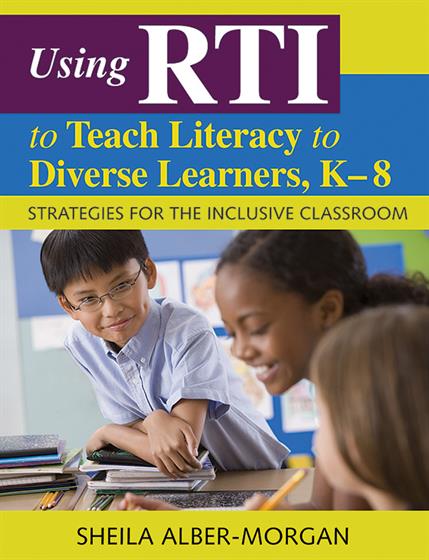Acknowledgments
About the Author
1. Overview
Universal Design and Response to Intervention
Diverse Learners and Inclusive Classrooms
NCLB and Evidence-Based Practices
Special Education Law
RTI and Assessment
Curriculum-Based Measurement
RTI and Literacy Instruction
Explicit Instruction and Active Student Responding
Peer-Mediated Instruction
Integrating Language Arts
Programming for Generalization
Collaborative Teaching
Summary
2. Assessing for Intervention in Reading
RTI and CBM reading
CBM Reading Methods
Oral Reading Fluency
CBM Maze
CBM Early Reading
Vocabulary Matching
Miscue Analysis and Comprehension Checks
Authentic Assessment
Summary
Maya
3. Implementing Multi-Tiered Reading Instruction
Evidence-Based Practices
Reading Instruction: Tier 1
Reading Instruction: Tiers 2 & 3
Phonemic Awareness: Tier 1
Phonemic Awareness: Tiers 2 & 3
Alphabetics: Tier 1
Alphabetics: Tiers 2 & 3
Fluency: Tier 1
Fluency: Tiers 2 & 3
Vocabulary: Tier 1
Vocabulary: Tiers 2 & 3
Comprehension: Tier 1
Comprehension: Tiers 2 & 3
Summary
Alexei
4. Assessing for Intervention in Writing
RTI and Writing Assessment
CBM Writing Measures
Managing CBM Writing
Writing Rubrics
Portfolios
Summary
Dylan
5. Implementing Multi-Tiered Writing Instruction
Evidence-Based Practices
Handwriting Instruction: Tier 1
Handwriting Instruction: Tiers 2 & 3
Keyboarding Instruction
Spelling Instruction: Tier 1
Spelling Instruction: Tiers 2 & 3
Writing Process: Tier 1
Writing Process: Tiers 2 & 3
Computer Technology for Writing: Tier 1
Computer Technology for Writing: Tiers 2 & 3
Summary
Carmen
6. Using Thematic Units to Integrate the Language Arts
Creating Thematic Units for Multi-Tiered Instruction
Selecting a Theme
Identifying and Obtaining Resources and Materials
Identifying Language Arts Skills
Planning Multi-Tiered Instruction
Summary
7. Programming for Generalization of Literacy Skills
Selecting Representative Teaching Examples
Making the Classroom Resemble Generalization Settings
Providing Students with a Means to Access Reinforcement
Arranging Ways to Transfer Skills to Different Settings
Training Students to Transfer Skills
8. Closing the Research to Practice Gap
References
Index



